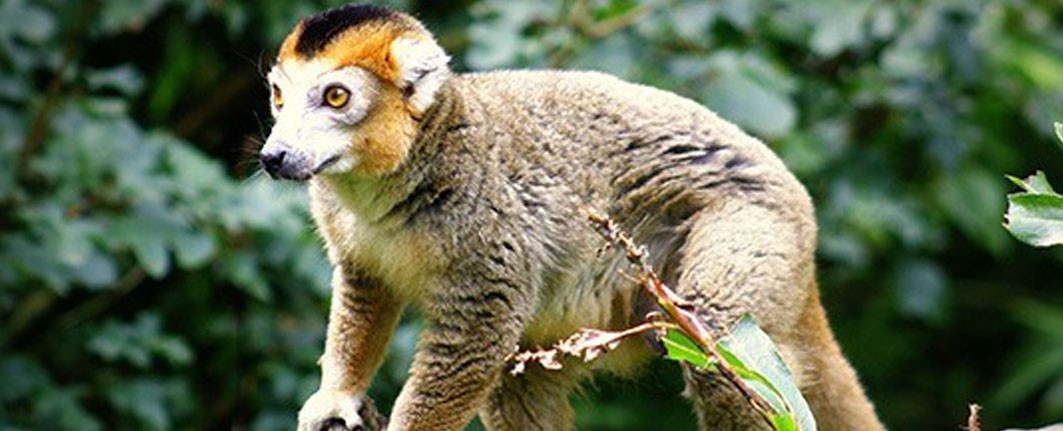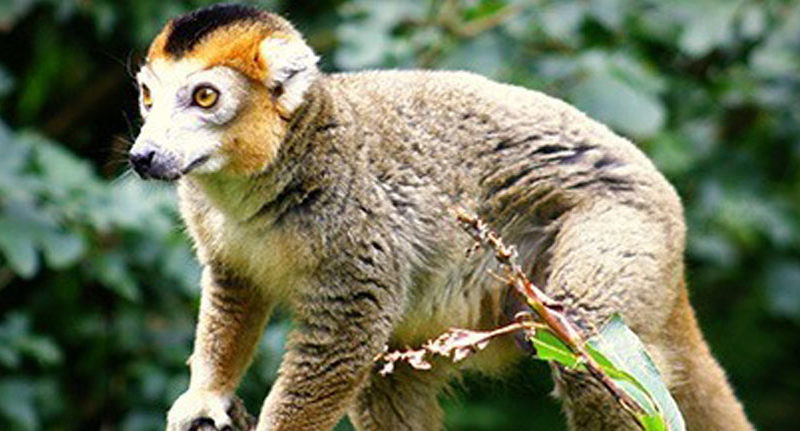
Madagascar Crowned Lemur: A Rare Jewel of Northern Madagascar
The Madagascar Crowned Lemur (Eulemur coronatus) is one of the most distinctive and easily recognizable lemurs found on the island of Madagascar. Known for its unique crown-like markings, this lemur is not only an important species for Madagascar’s biodiversity but also a highlight for eco-tourists visiting the northern reserves.
This article explores the Madagascar Crowned Lemur’s distribution, identification, behavior, diet, and conservation, while also guiding travelers on where they can best encounter this fascinating primate.
What is the Madagascar Crowned Lemur?
The Madagascar Crowned Lemur belongs to the Eulemur genus and is instantly recognizable thanks to the crown patch on its head. Both males and females show this characteristic, but with different colors:
-
Males: Rufous-grey fur with a black crown patch.
-
Females: Pale grey fur with a rufous crown patch.
This sexual dimorphism makes the Madagascar Crowned Lemur one of the easiest species to identify in the wild.
Distribution
The Madagascar Crowned Lemur is the most northerly of Madagascar’s lemurs. Its distribution stretches almost to Cap d’Ambre, at the island’s northern tip. It inhabits:
-
Moist forests
-
Dry forests
-
Degraded forests
This adaptability allows the Madagascar Crowned Lemur to survive in various habitats, though its population is still at risk due to habitat loss.
Identification of the Crowned Lemur
The Madagascar Crowned Lemur has striking physical characteristics that make it easy to spot:
-
Males: Rufous-grey fur with a black crown on the forehead.
-
Females: Pale grey fur with a rufous crown.
-
Both sexes display a diagnostic crown patch, which gives the species its name.
This clear difference between males and females makes the Madagascar Crowned Lemur particularly fascinating for researchers and wildlife photographers.
Voice
The Crowned Lemur produces a distressed squeal that closely resembles the call of the Black Lemur. Vocal communication is crucial for this species, helping individuals stay connected in the dense forests they inhabit.
Behavior
Like other Eulemur species, the Madagascar Crowned Lemur displays highly social behavior:
-
Lives in small groups of up to 15 individuals.
-
Frequently associates with Sanford’s Brown Lemur, showing interspecies tolerance.
-
Diet: Primarily fruit, but also flowers and leaves.
-
Activity: Both diurnal and nocturnal, making it one of the few lemurs active during both day and night.
-
Reproduction: Young are born between mid-September and October.
This behavioral flexibility helps the Crowned Lemur adapt to seasonal changes in food availability.
Diet of the Crowned Lemur
The Crowned Lemur is mainly frugivorous, feeding on a variety of seasonal fruits. However, it also consumes:
-
Flowers
-
Leaves
-
Seeds
-
Occasionally small insects
As a seed disperser, the Crowned Lemur plays a critical ecological role in forest regeneration.
Where to See the Crowned Lemur
For travelers, the Crowned Lemur is one of the most accessible and conspicuous lemurs to observe in the wild. The best places to encounter this species include:
-
Amber Mountain National Park – a lush rainforest sanctuary.
-
Ankarana National Park – a dry forest habitat with limestone formations.
-
Camping sites within these reserves, where the lemurs are often seen.
Eco-tourists will find the Crowned Lemur relatively easy to spot compared to other rare lemurs.
Conservation Status of the Crowned Lemur
The Crowned Lemur is currently classified as Endangered on the IUCN Red List. Its main threats include:
-
Deforestation for agriculture and logging.
-
Hunting and trapping for bushmeat.
-
Habitat fragmentation caused by expanding villages and farmlands.
Conservation organizations are working to protect the Crowned Lemur through:
-
Expanding protected areas in northern Madagascar.
-
Promoting sustainable tourism.
-
Educating local communities about the species’ ecological importance.
Final Thoughts on the Crowned Lemur
The Crowned Lemur is one of the most striking primates in Madagascar, with its crown-like markings, social behavior, and adaptability. Found mainly in the north, it offers travelers a chance to witness a rare lemur species in iconic national parks such as Amber Mountain and Ankarana.
Conserving the Crowned Lemur is not only vital for the species itself but also for maintaining Madagascar’s fragile ecosystems. By supporting eco-tourism and conservation projects, we can ensure that future generations continue to marvel at this crowned treasure of the island.
HT AGENCY TOURS
Luxury Madagascar with the best luxury African safari tours packages. Discover your next perfect destination with HT Agency Tours

